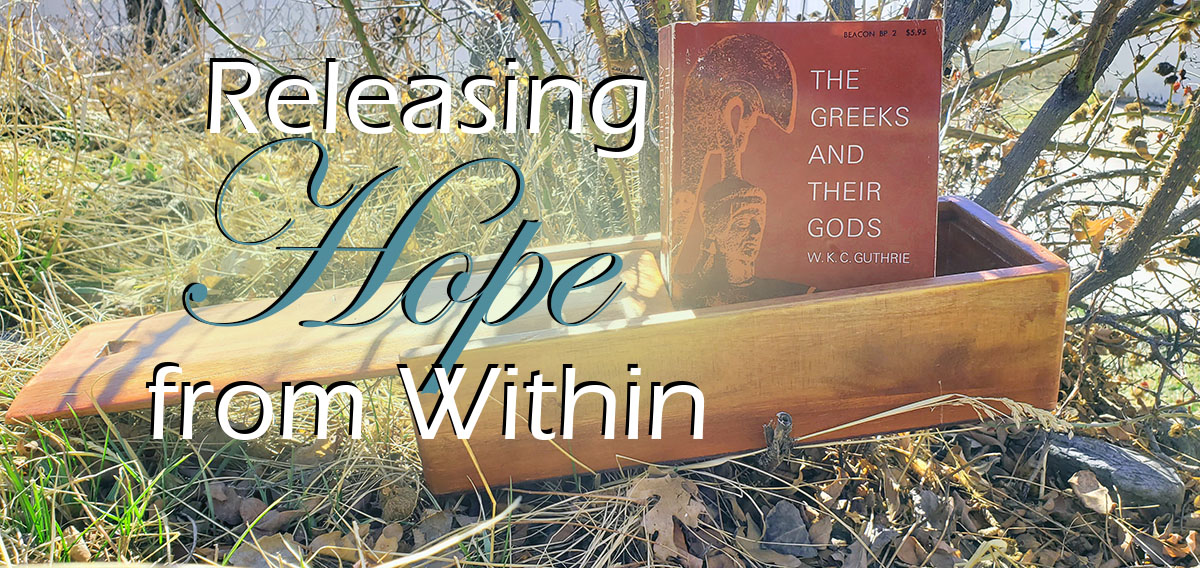

Pandora's Hope
By Jeremy Webb, LCSW
March 2, 2021
My youngest child loves mythology and recently we were talking about Pandora’s box. If you simplify that myth a clear message emerges regarding what would have helped overcome all the ills of that box. The one thing needed to endure all the hardships that came out of Pandora’s box was kept within the box, that thing was hope.
Understanding what hope is can be hard because some days we feel we have it and others we feel none at all. I like how the late Dr. Shane Lopez described hope when he said “Hope is the belief that the future will be better than the present, along with the belief that you have the power to make it so.”*
I like to think that hope is kept inside all of us. However, as I said some days it is hard to keep it; in fact, some days it may escape us for a time. There are times I feel like I cannot do anything right, like nothing I do will be OK, but I often find that given enough time my hope comes back. Alexandre Dumas once said, “All human wisdom is summed up in two words; wait and hope”. I love that quote because I have seen this in other people. I have seen humans knocked around, but with the help of others and given enough time, I often see hope return to them as it has for me.
I really think hope is one of the most powerful traits humans have. Hope often keeps us afloat amidst the waves of despair. In a broad sense we can define hope as an emotional state of believing things will be alright, even when things are not alright in that moment. Another amazing thing is that I believe we can learn how to hope.
I want to share some of my tips for increasing hope, while being clear that I think everyone develops skills in different ways and what works for me in developing my hope may not work for everyone. But I will share these suggestions in the hope that it helps some of you.
- I love food and so I often try to take my time when I have a favorite snack or meal and really notice my enjoyment. I hold it in my mouth and think about what I am enjoying so much in that food. I also love going to the gym, and after every workout I take 5 minutes and meditate and think about how my body feels and the gratitude I have had in being able to move.
- Some other ways to be proactive is to use daily journaling to help recognize your feelings, both good and bad.
- Positive affirmations in your mirror can also be a helpful, daily practice.
- Finally, challenging cognitive distortions can accommodate hope.
Sometimes, even while being proactive we will struggle with hope. One thing I do to maintain my hope is to challenge cognitive distortions. Cognitive distortions are “an exaggerated or irrational thought pattern”.** Some examples are “all-or-nothing thinking” and “overgeneralizations.” I often fall into these traps; once I catch myself, I talk to myself about what I am thinking. I ask myself why I am thinking that way. After a minute or two, I do a small mediation, or positive affirmation, that contradicts the distorted thought and then I can reassess it. Sometimes I even have to let that thought go for a while and distract myself. And that is fine. Since I am not perfect, if I cannot shake a cognitive distortion I am okay using distractions instead.
Hope is a powerful tool that we humans can use. While we all are going to have to weather storms throughout our lives, if we can develop hope we will be able to bounce back quicker after those storms.
References
*Lopez, S., Dr. (Director). (2013, May 07). Interview with Dr. Shane Lopez [Video file]. Retrieved March 03, 2021, from https://www.youtube.com/watch?list=PLA38DCA66A0AEDE6F&v=Bka3sI5_WZ4&feature=youtu.be
**Helmond, P., Overbeek, G., Brugman, D., & Gibbs, J. C. (2014). A meta-analysis on cognitive distortions and externalizing problem behavior. Criminal Justice and Behavior, 42(3), 245-262. doi:10.1177/0093854814552842

